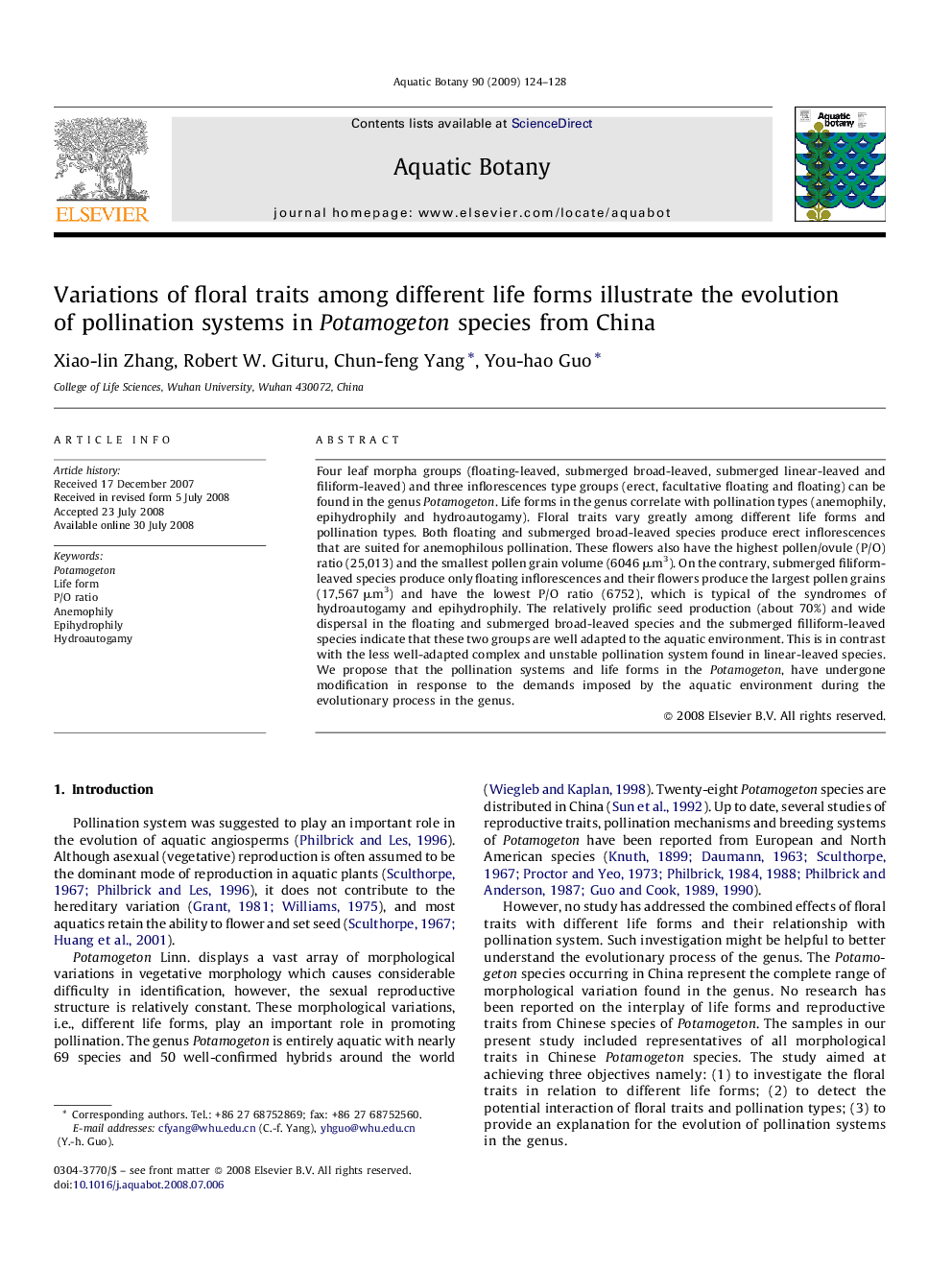| Article ID | Journal | Published Year | Pages | File Type |
|---|---|---|---|---|
| 4528513 | Aquatic Botany | 2009 | 5 Pages |
Four leaf morpha groups (floating-leaved, submerged broad-leaved, submerged linear-leaved and filiform-leaved) and three inflorescences type groups (erect, facultative floating and floating) can be found in the genus Potamogeton. Life forms in the genus correlate with pollination types (anemophily, epihydrophily and hydroautogamy). Floral traits vary greatly among different life forms and pollination types. Both floating and submerged broad-leaved species produce erect inflorescences that are suited for anemophilous pollination. These flowers also have the highest pollen/ovule (P/O) ratio (25,013) and the smallest pollen grain volume (6046 μm3). On the contrary, submerged filiform-leaved species produce only floating inflorescences and their flowers produce the largest pollen grains (17,567 μm3) and have the lowest P/O ratio (6752), which is typical of the syndromes of hydroautogamy and epihydrophily. The relatively prolific seed production (about 70%) and wide dispersal in the floating and submerged broad-leaved species and the submerged filliform-leaved species indicate that these two groups are well adapted to the aquatic environment. This is in contrast with the less well-adapted complex and unstable pollination system found in linear-leaved species. We propose that the pollination systems and life forms in the Potamogeton, have undergone modification in response to the demands imposed by the aquatic environment during the evolutionary process in the genus.
